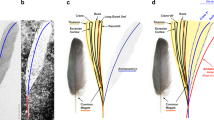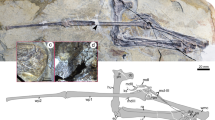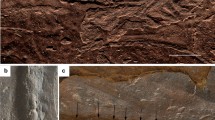Abstract
IT has long been known that when the wing of an insect becomes fossilised the original chitin is either completely destroyed or else replaced by some other substance, such as carbon, silica, or oxide of iron. This, however, does not explain the extraordinary perfection with which some insect wings have been preserved, even in Palæozoic strata. A recent study of two thousand fossil insects from the Lower Permian of Kansas, approximately two hundred millions of years old, has brought to light many specimens in which the wings are as perfect as if they had just been dissected from the insect; yet it is evident that the original ehitin is not present, neither is it replaced by any other substance. The explanation of this is to be found as follows:
This is a preview of subscription content, access via your institution
Access options
Similar content being viewed by others
Author information
Authors and Affiliations
Rights and permissions
About this article
Cite this article
TILLYARD, R. Method of Fossilisation of an Insect Wing. Nature 120, 802–803 (1927). https://doi.org/10.1038/120802b0
Issue Date:
DOI: https://doi.org/10.1038/120802b0
Comments
By submitting a comment you agree to abide by our Terms and Community Guidelines. If you find something abusive or that does not comply with our terms or guidelines please flag it as inappropriate.



